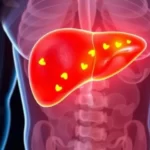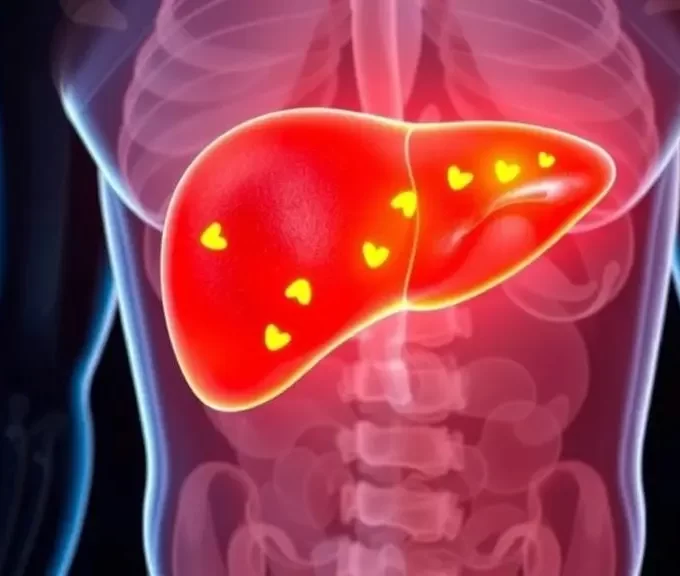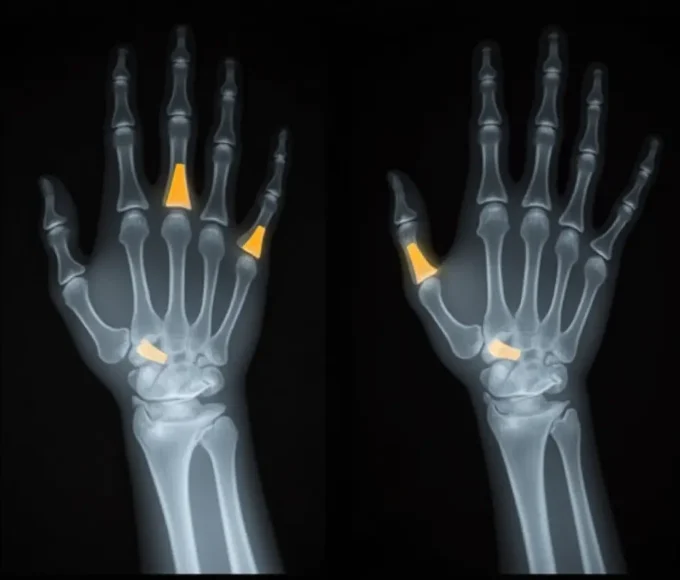If you’ve ever had a deep, stubborn cough that rattles your chest and drains your energy, you already know how exhausting bronchitis can be. For many people, it starts as an innocent cold or flu, but within days, the cough grows harsher, the chest feels heavier, and every breath becomes an effort.
As a homeopathic practitioner, I often see patients who have tried antibiotics, cough suppressants, or inhalers, only to find that their symptoms keep coming back. Homeopathy offers a different approach: instead of simply suppressing the cough, it works to address the root cause, strengthen the lungs, and reduce the likelihood of recurrence. This is the true promise of homeopathic bronchitis treatment: a natural, individualized way to restore balance and breathing comfort.
What Exactly Is Bronchitis?
Bronchitis is the inflammation of the bronchial tubes, the airways that connect your windpipe to your lungs. When these tubes are irritated, they produce more mucus, which can clog air passages and make breathing more difficult. The condition comes in two primary forms:
- Acute Bronchitis: Short-term, often following a cold or flu, lasting from a few days to a few weeks.
- Chronic Bronchitis: Long-term, with a cough that produces mucus for at least three months in a year for two consecutive years. This form is a type of COPD and can be triggered by smoking, long-term exposure to irritants, or repeated infections.
Some people also suffer from allergic bronchitis, where allergens like dust or pollen continuously inflame the airways.
Symptoms
Acute bronchitis often begins with symptoms of a cold: a runny nose, sore throat, and mild fever. Soon, the cough develops at first dry and irritating, then produces clear or white mucus that may later turn yellowish. Chest tightness, wheezing, and fatigue are familiar.
Chronic bronchitis creeps in more slowly. Many people dismiss it as “just a smoker’s cough” or “seasonal allergies,” but over time, it can lead to lasting lung damage. Common signs include:
- Persistent cough with thick mucus
- Shortness of breath, especially when walking or climbing stairs
- Wheezing or a whistling sound when breathing
- Mild chest pain or tightness
Why Choose Homeopathy for Bronchitis?
In homeopathy, we treat the person, not just the disease. Two people with bronchitis may have completely different symptoms, one with a dry, hacking cough, another with rattling mucus that’s hard to bring up. They may need entirely different remedies.
Homeopathy for bronchitis focuses on:
- Matching the remedy to your exact symptoms
- Supporting your immune system
- Preventing recurrent infections
- Reducing the severity and duration of flare-ups
Over time, the correct homeopathic bronchitis medicine can help you breathe easier, recover faster, and experience fewer attacks.
Effective Homeopathic Remedies for Bronchitis
Aconite (Acon.)
The sphere of Aconite in bronchitis is limited to the onset of the affection, and here it must be distinguished carefully from other remedies also suitable to this stage. When, as a result of checked perspiration, exposure to cold, drafts, or dry, cold winds, a cold is taken starting with a coryza, frequent sneezing, chilliness, restless sleep, full, hard pulse, and the characteristic mental condition, Aconite will come in. However, its stage is a brief one and is usually over before the physician sees the case. It is of use, therefore, only before the inflammation is localized. Dr. Pope says that Aconite will often prevent the development of a thorough bronchitis. If the cases are characterized by lassitude and physical weakness and indisposition with a full flowing pulse and moderate congestion, then Aconite is supplanted by Gelsemium. Oftentimes, it is difficult to determine which of these remedies is indicated, when Ferrum phosphoricum must be considered, and more especially so in the bronchitis of children, where it will often check the trouble. It stands, therefore, midway between Aconite and Gelsemium, with less restlessness and bounding pulse than the former and less flowing pulse and drowsiness than the latter remedy. It corresponds to cases where every little cold adds to trouble, the cough is short and dry, the lungs are sore, and the breathing is somewhat oppressed. Veratrum viride suits violent cases from the first, where there is high temperature, full, hard, rapid pulse, and excellent heat of the body. It differs from Aconite in having no anxiety and no restlessness. When the arterial turgescence is over, its period of usefulness is past.
Belladonna (Bell.)
Belladonna suits cases of bronchitis with a violent fever, short, dry, continual, distressing cough, worse at night and on lying down, where the breathing is irregular and hurried, no expectoration, or, if present, it is apt to be bloodstreaked, fullness in the chest without any pain. However, children will cry when coughing, the skin is hot and inclined to moisture, not dry like Aconite or Veratrum viride. There is a tendency to drowsiness; the patient does not sleep, but dozes in a semiconscious manner and starts frequently. Do not be too great a hurry to change to another remedy when the cough is spasmodic and the child cries after each paroxysm. Belladonna is still the remedy.
Bryonia (Bry.)
This remedy is seldom indicated in pure bronchitis, though very frequently given. It is of especial good service when the cough is very severe, hurting the head and distant parts of the body. The patient presses their hands on the sides of the chest while coughing to relieve the pain. There is tremendous pressure over the sternum, dyspnoea, and a dry cough, which seems to start from the stomach. It is worse after a meal, and there is but little expectoration. The cough is more the result of an irritation in the larger bronchi than in the finger tubes, and the hacking produces sore spots in the trachea and chest. Stitching pains in the sides, of course, further indicate Bryonia. The cough is aggravated by coming into a warm room from the cold air. Hughes says that it is the best remedy after Aconite for what is known as a cold on the chest. If the expectoration becomes copious, loose, thick, and muco-purulent, Pulsatilla may be indicated; if accompanied by nausea and vomiting of mucus, then give Ipecacuanha, especially bronchitis following measles and whooping cough. Chelidonium is an excellent medicine.
Phosphorus (Phos.)
Especially suitable for sub-acute and lingering cases in delicate, tall, slender, overgrown, or phthisical subjects. It thus suits non-resistant individuals. There is a paroxysmal cough with pain under the sternum, suffocative pressure in the upper part of the chest with constriction of the larynx, hoarseness, mucous rales, bloody and mucous sputum or purulent, having a salty or sweetish taste; the patient feels better after sleep. The respiration is embarrassed, and the tendency is toward pneumonia. Rumex has a tickling in the supra-sternal fossa; any change in breathing causes cough; must breathe warm air to avoid coughing. With Phosphorus, the cough is worse after meals, and a guiding symptom is soreness and rawness of the chest; the cough is also worse going into the open air, being the reverse of Bryonia. Talking, or any use of the voice, aggravates the cough—Hepar sulphur. When the cough begins to loosen and becomes rattling, fatiguing, and choking, with moist rales, Hepar will be the remedy. “Coughing into a choke” is a valuable indication for this remedy. It corresponds more closely to subacute cases. It is particularly adapted to dyscrasias, herein differing from Pulsatilla. Kali carbonicum is also valuable in capillary bronchitis with dyspnoea, a choking cough, and sharp stitches in the chest. The 12x potency is perhaps the best.
Mercurius (Merc.)
The sovereign remedy in inflammatory bronchial catarrh; there is roughness and soreness from the fauces down through the middle of the chest, a dry, raw, concussive cough, which is very exhausting; sputum watery, saliva-like, or yellow and muco-purulent. There is fever and alternation of hills and heat, desire for cold drinks, which aggravate the cough. And pasty sweat without relief. Kali bichromicum has for its indication the tough, tenacious, glutinous character of the expectoration; it can be drawn out in long strings. Hughes considers it proper when bronchitis lingers long in a sub-acute condition. The expectoration may also be of bluish lumps, and the cough is especially troublesome towards morning; the tightness seems to be at the epigastrium.
Antimonium Tartaricum (Ant-t.)
This remedy corresponds to two stages of bronchitis, an early one and a late one. At the beginning of capillary bronchitis in young infants, or in old people, this remedy stands most prominently. There are sub-crepitant rales throughout the chest, wheezing breathing, the cough sounds loose, but no phlegm is raised. In children, the cough is infrequent, and the child becomes drowsy; the respiration is superficial, requiring labored efforts of the respiratory muscles, and vomiting of food and mucus may be present. In these cases, carbon dioxide poisoning threatens, and the patient’s mucous secretion drowns him. These are clear indications of Antimonium tartaricum. Ipecacuanha is the most similar drug; the rales are louder and coarser, there is much coughing, but the patient raises little phlegm in infants, the prostration not being as marked as with Antimonium tartaricum. There is an excellent accumulation of mucus, spasmodic cough, nausea and vomiting, and difficulty in breathing. After its use, the expectoration becomes less tenacious, which permits it to be raised more easily. Baryta carbonica has loud rattling in the chest, but the patient cannot raise their head. Ammonium causticum also has a copious accumulation of mucus in the lungs with incessant cough. Another preparation of Antimony, namely, Antimonium iodatum, is praised by Goodno for a heavy, yellow, muco-purulent expectoration. It often acts promptly in relieving when other remedies fail. Antimonium arsenicosum is also a most useful remedy and corresponds to dangerous types of capillary bronchitis.
Sulphur (Sulph.)
Sulphur corresponds well to chronic bronchitis, and brilliant results are here obtained. It’s catarrh of the bronchial mucous membranes is accompanied by loud rales, a persistent, profuse, thick, muco-purulent expectoration, and is attended by suffocative attacks. Balsam Peru. Bronchial catarrh, with loud rales and profuse expectoration; both this remedy and Pix liquida have expectoration of purulent matter. Bacillinum is a remedy highly spoken of by some competent observers; it suits especially individuals who are constantly catching cold, one is hardly gotten rid of before another is contracted. The irritation locates itself in the bronchial mucous membrane, leaving a troublesome cough. Arnulphy considers the remedy a most useful one.
Carbo Vegetabilis (Carb-v.)
Bronchitis of old people with profuse, yellow, foetid expectoration, dyspnoea, much rattling in the chest, and burning calls for this remedy. Among other remedies, treating bronchial troubles in old people includes Senega, where the cough is irritating. The phlegm is especially adhesive, and the patient complains of a pressing pain in the chest when respiring, moving, or coughing. Lachesis, where the cough comes on when the patient is about to drop off to sleep; Arsenicum, fatiguing, suffocative cough with violent dyspnoea; Scilla, obstinate chronic coughs with stitches in the chest, expectoration transparent or muco-purulent, easy at times, hard at others; Nux vomica, Rhus, and Veratrum album. Dulcamara is a valuable remedy for bronchial catarrhs of old people with a very free greenish expectoration, worse from change of weather to cold and wet.
Homeopathy for Chest Congestion Relief
For many patients, homeopathic remedies for chest pain and congestion bring relief when mucus build-up makes breathing difficult. Remedies like Kali bichromicum work well for thick, sticky mucus, while Ipecacuanha helps when nausea accompanies coughing.
Lifestyle Tips During Homeopathic Bronchitis Treatment
When undergoing homeopathic treatment for bronchitis, daily habits can either support your recovery or hinder it. Think of these changes as a way to give your lungs the best environment to heal.
- Drink warm fluids to thin mucus – Herbal teas, warm water with honey, and clear broths can help loosen mucus.
- Use steam inhalation with eucalyptus – The warm vapor soothes irritated airways, and eucalyptus can help open nasal passages.
- Rest in a warm, dust-free environment – A calm, clean space reduces lung irritation.
- Avoid smoking and polluted air – These can trigger inflammation and delay recovery.
- Wear a scarf in cold weather – Protecting your airways from cold air can prevent coughing fits.
When to See a Doctor
While homeopathic bronchitis treatment can be powerful, there are times when immediate medical attention is essential. Bronchitis can occasionally lead to complications such as pneumonia or acute respiratory distress. If you have an underlying heart or lung condition, you must be especially cautious.
Seek urgent care if:
- Your fever is above 102°F and persistent
- You experience sharp chest pain or pressure
- Your lips or fingertips turn bluish
- Breathing becomes severely labored, or wheezing worsens despite treatment.
Conclusion
Homeopathy for bronchitis isn’t just about easing a cough; it’s about restoring long-term lung health. With the proper remedy, tailored to your unique symptoms, recovery can be faster, gentler, and more complete. Combined with healthy lifestyle changes, homeopathic remedies for bronchitis in adults and children can offer lasting relief and prevent future flare-ups.
FAQs
What is the fastest way to cure bronchitis?
Rest, stay hydrated, use steam inhalation, and follow your doctor’s or homeopath’s prescribed treatment. Avoid irritants like smoke and dust.
What should you not eat in bronchitis?
Avoid cold drinks, processed foods, and excessive dairy, which may increase mucus.
Will bronchitis go away on its own?
Mild acute bronchitis can resolve in 1–3 weeks, but chronic cases require ongoing treatment.
How to tell if bronchitis is viral or bacterial?
Viral bronchitis is more common and often follows a cold or flu. Bacterial bronchitis usually causes a higher fever and thicker, discolored mucus. Diagnosis requires a medical check.
What does a bronchitis cough sound like?
It’s typically a deep, hacking cough that may produce mucus and sometimes a wheezing or rattling sound.











